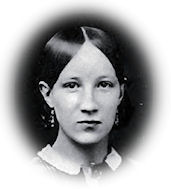March 29.—An officer arrived here from the front yesterday and he said that, on Saturday morning, shortly after the battle commenced which resulted so gloriously for the Union in front of Petersburg, President Lincoln, accompanied by General Grant and staff, started for the battlefield, and reached there in time to witness the close of the contest and the bringing in of the prisoners. His presence was immediately recognized and created the most intense enthusiasm. He afterwards rode over the battlefield, listened to the report of General Parke to General Grant, and added his thanks for the great service rendered in checking the onslaught of the rebels and in capturing so many of their number. I read this morning the order of Secretary Stanton for the flag raising on Fort Sumter. It reads thus: “War department, Adjutant General’s office, Washington, March 27th, 1865, General orders No. 50. Ordered, first: That at the hour of noon, on the 14th day of April, 1865, Brevet Major General Anderson will raise and plant upon the ruins of Fort Sumter, in Charleston Harbor, the same U.S. flag which floated over the battlements of this fort during the rebel assault, and which was lowered and saluted by him and the small force of his command when the works were evacuated on the 14th day of April 1861. Second, That the flag, when raised be saluted by 100 guns from Fort Sumter and by a national salute from every fort and rebel battery that fired upon Fort Sumter. Third, That suitable ceremonies be had upon the occasion, under the direction of Major-General William T. Sherman, whose military operations compelled the rebels to evacuate Charleston, or, in his absence, under the charge of MajorGeneral Q. A. Gillmore, commanding the department. Among the ceremonies will be the delivery of a public address by the Rev. Henry Ward Beecher. Fourth, that the naval forces at Charleston and their Commander on that station be invited to participate in the ceremonies of the occasion. By order of the President of the United States E. M. Stanton, Secretary of War.”

Village Life in America.
Previous post: Three Years in the Confederate Horse Artillery — George Michael Neese.
Next post: War Diary of Luman Harris Tenney


